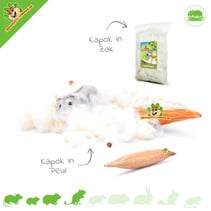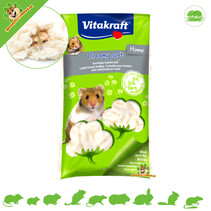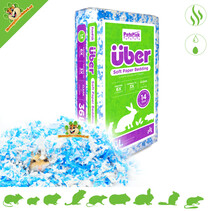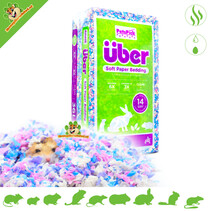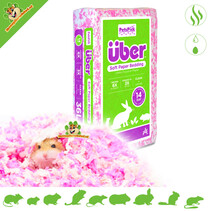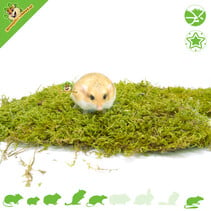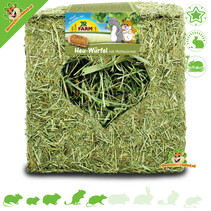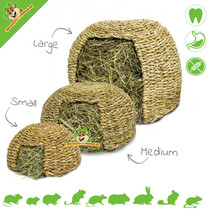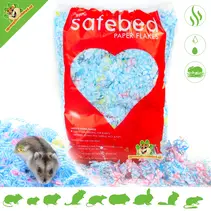Nesting material for Hamsters in the Hamster Webshop
- Ordered before 5 p.m., shipped the same day!
- Al 14 jaar een begrip!
- Delivery from our own stock
- Ordered before 5 p.m., shipped the same day!
- Al 14 jaar een begrip!
- Delivery from our own stock
Order nesting material for your Hamster quickly and easily at DRD Rodent Shop ® The Hamster Webshop for your Hamster!
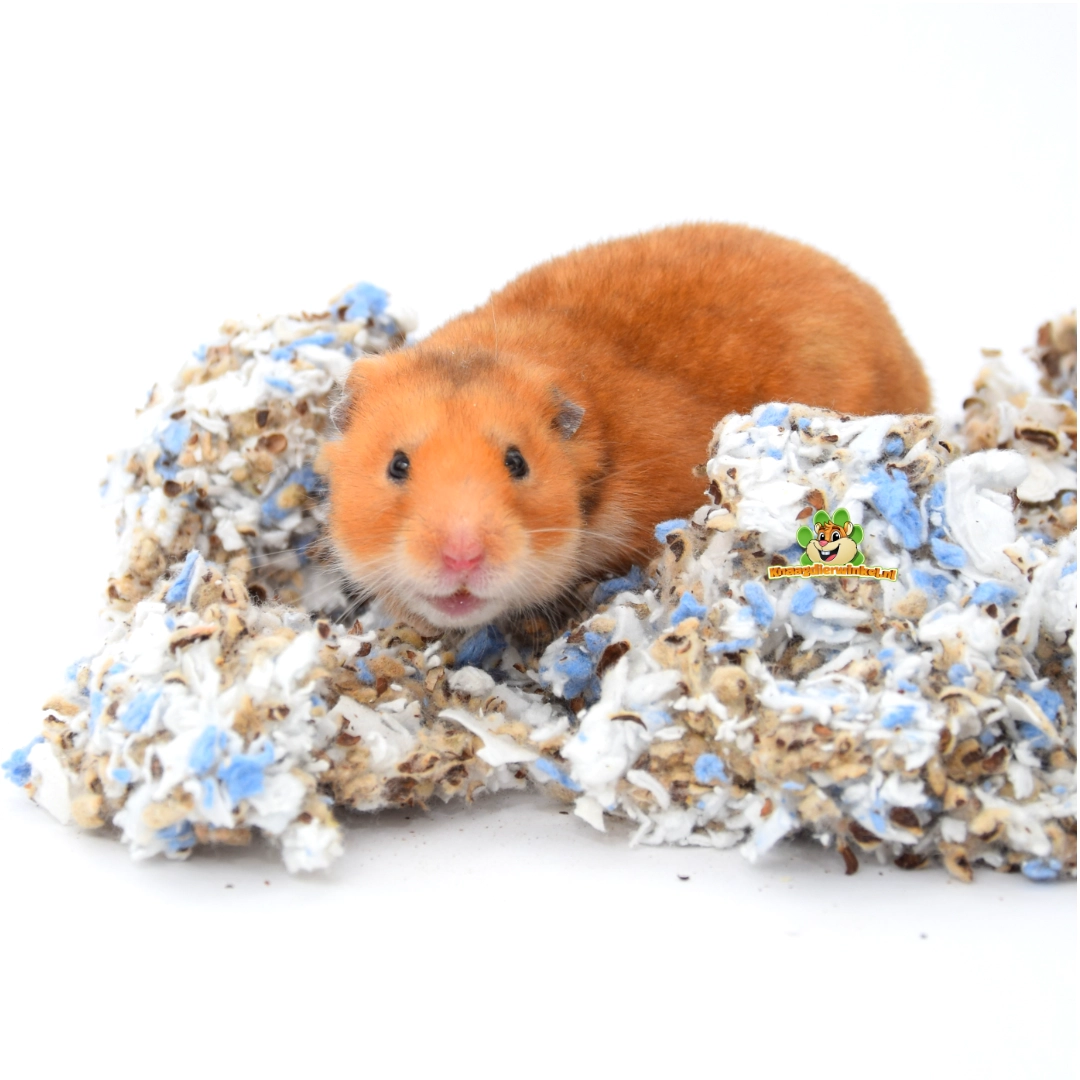
Hamsters need a soft and warm nest where they can snuggle up. A hamster will want to shape its own nest. It is important that the nesting material is safe and suitable for hamsters. That is why you have come to the right place for nesting material for your hamster at DRD Hamster Webshop! Here you will find different types of nesting material for a competitive price!
Hamsters are real nest builders, they always need nesting material so they can line their hole. Making a nest is therefore part of the natural behavior of a hamster. Therefore always give the hamster 15-25 grams of nesting material.
What types of nesting material are there for Hamsters?
There are different types of nesting material available. When it comes to hamsters' preference, they prefer the softest nesting material. They use the softest material inside their nest. They also prefer to sleep in it. Nesting material that is a bit firmer, such as hemp or grass, is used by hamsters as a second layer. They use this to line their burrow. Hemp is especially nice because it keeps its shape and does not have to be replaced every time the bedding is cleaned. Some hamsters actually make a round nest out of this, which is very nice to see!
Is Natural Nesting Material Good for Hamsters?
It is good to use natural materials as nesting material. For example, synthetic hamster cotton wool is not recommended. If the hamster ingests the synthetic fibers, they cannot be digested by the body and cause blockages in the animal's intestines. You will therefore not find hamster cotton wool in our digital shelves. The types of nesting material that you can buy from us are safe and digestible.
Which nesting material for hamsters is suitable for summer and winter?
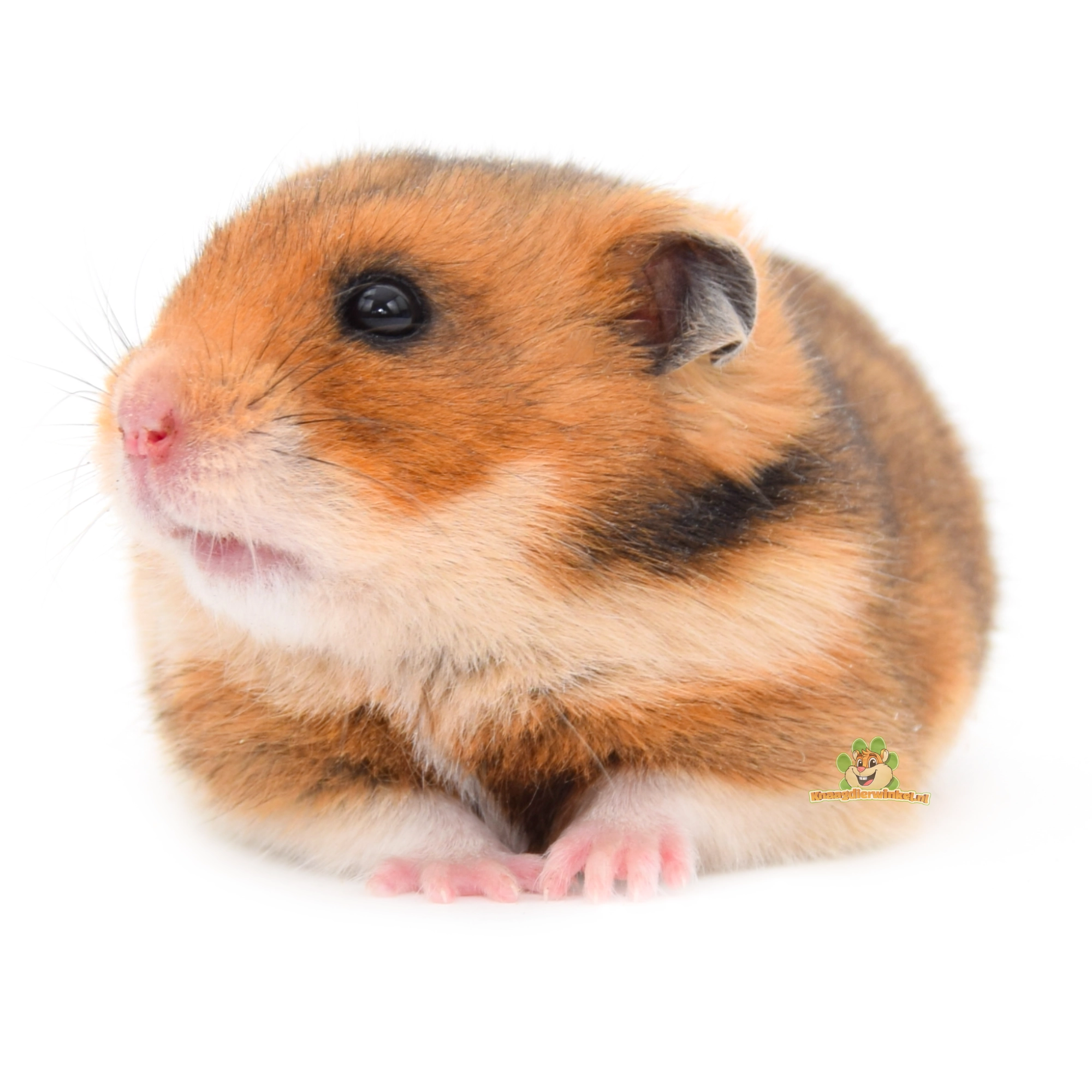 In general, the hamster arranges its nesting material all by itself. It is a good idea to offer the hamster different types of nesting material in the summer and winter and to see which nesting material it chooses. Some hamsters have a different preference in the winter than in the summer.
In general, the hamster arranges its nesting material all by itself. It is a good idea to offer the hamster different types of nesting material in the summer and winter and to see which nesting material it chooses. Some hamsters have a different preference in the winter than in the summer.
What is the best nesting material for hamsters?
The best nesting material for hamsters should be comfortable, safe and natural . Consider:
- Paper shreds (without inks or fragrances), such as Exotic Colours N Cotton or Safebed
- Cotton (especially for animals, not real cotton balls)
- Hemp fibers
- Hay (for extra nesting material)
These materials are soft, absorbent, and give your hamster the opportunity to make a nice nest, just like in nature.
What is the difference between nesting material and bedding for hamsters?
Nesting material and ground cover have different functions:
- Nesting material is used to create a soft and comfortable bed for your hamster to sleep in and retreat to.
- Bedding is used to cover the floor of the cage, absorbs urine and keeps the enclosure hygienic.
Both are essential, but provide different benefits to your hamster's well-being.
How much nesting material does my hamster need?
A hamster needs enough nesting material to make a nest in which it can snuggle up. Your hamster can determine how much material it needs, but it is useful to add at least 50 to 100 grams per week, depending on the activity of your hamster and the size of its cage.
Make sure to replace used nesting material regularly to maintain a clean and comfortable sleeping environment.
Can hamsters build their own nests?
Yes! Hamsters are natural builders and love to make their nests. They often use:
- Paper shreds or cotton to build their bed
- Hemp fiber for the structure
- Hay for extra insulation and comfort
By letting your hamster do this itself, it can express its natural behavior and feel safe and happy.
What is hemp fiber and is it good for my hamster?
Hemp fiber is an excellent nesting material for hamsters. It is:
- Soft and breathable
- Absorbent for moisture and odor
- Natural and safe
It is a great alternative to some other materials as it contains less dust and no harmful chemicals.
Should I always give my hamster fresh nesting material?
Yes, your hamster will change and renew its nesting material regularly. It is important to change the nesting material used weekly to keep the cage clean and maintain a healthy environment . Fresh nesting material also provides comfort and natural behavior .
Is hay suitable as nesting material for hamsters and dwarf hamsters?
Yes! Hay is great for hamsters, but it is important to offer it fresh and not moldy .
Hay can also be used as nesting material for hamsters. We have bundled all types of hay in one category and not placed them with nesting material so that the overview is better maintained. Hamsters make very nice nests of hay. They use hay as the outer layer of their nest. For the inner lining they use nesting material that is softer. All types of hay that are in the category " Hamster Hay Herbs and Seeds " are suitable for hamsters.
- A natural sense of shelter
- Space to dig and make its own nest
- Extra fiber for healthy digestion
Always make sure your hay comes from an animal friendly source such as the hay types we sell, so that it has not been treated with pesticides.






